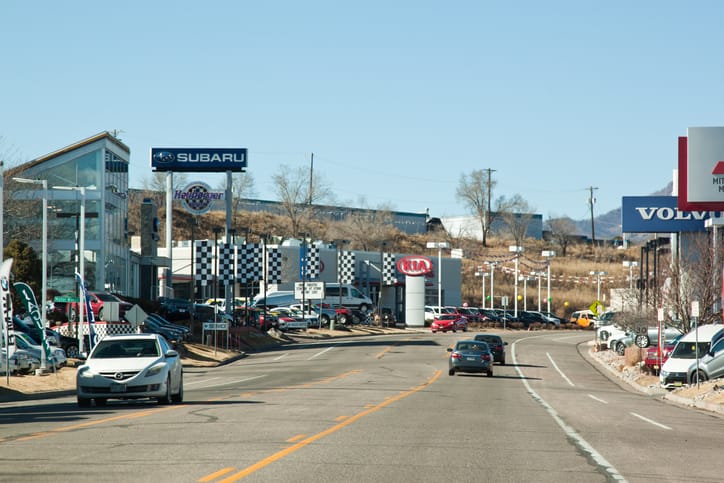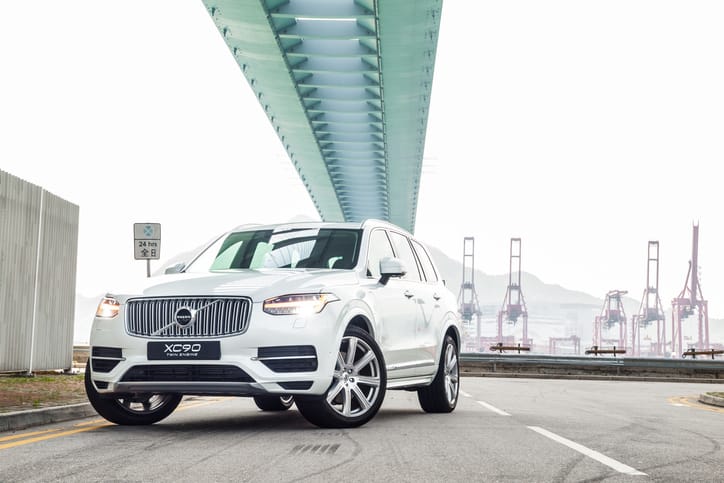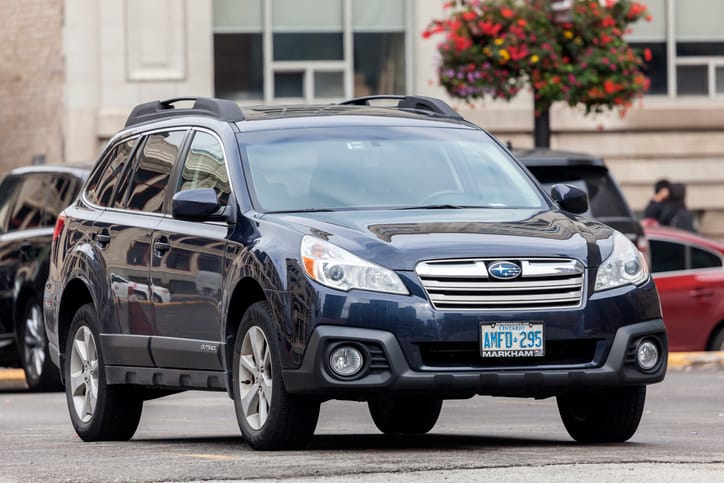Safety First: Cars Loaded with Tech to Keep You Protected (Volvo XC90 vs. Subaru Outback)

In today's world, car manufacturers are constantly innovating and pushing the boundaries of automotive safety. With a plethora of driver-assistance features and intelligent technologies, modern cars are becoming increasingly adept at protecting occupants and preventing accidents. This article will take a deep dive into the safety features of two popular family SUVs: the Volvo XC90 and the Subaru Outback. We'll compare their respective strengths and weaknesses to help you decide which car offers the best safety package for you and your loved ones.
Safety Philosophy: Scandinavian Steel vs. Japanese Engineering
Volvo has long been synonymous with safety. Their "Safety First" philosophy, established in the 1970s, prioritizes occupant protection in every aspect of car design. This commitment is evident in the robust construction of their vehicles, featuring high-strength steel and crumple zones that absorb impact energy in a collision. Subaru, on the other hand, takes a more preventative approach to safety. Their symmetrical all-wheel-drive (AWD) system is a core tenet of their safety philosophy, providing superior traction and control in all weather conditions. This focus on stability helps drivers avoid accidents altogether.

Driver-Assistance Features: A Technological Arms Race
Both the Volvo XC90 and the Subaru Outback come equipped with a comprehensive suite of driver-assistance features. Here's a closer look at some of the key technologies they offer:
- Automatic Emergency Braking (AEB): This critical feature can detect an imminent collision with another vehicle or pedestrian and automatically apply the brakes to avoid an accident or mitigate its severity. Both the XC90 and Outback offer AEB as a standard feature.
- Blind Spot Monitoring (BSM): This system uses sensors to detect vehicles in your blind spots and alerts you with a visual or auditory signal when it's unsafe to change lanes. Both SUVs offer BSM, with some higher-end XC90 trims featuring Rear Cross Traffic Alert, which warns you of approaching vehicles when backing out of a parking space.
- Lane Departure Warning (LDW): This technology uses cameras to monitor lane markings and alerts you if you start to drift out of your lane unintentionally. Both the XC9 and Outback offer LDW, with some Volvo trims featuring Lane Keeping Assist, which can gently nudge the car back into its lane.
- Adaptive Cruise Control (ACC): This system maintains a set distance from the car in front of you, automatically adjusting your speed to maintain a safe following distance. Both SUVs offer ACC, with some Volvo trims featuring Pilot Assist, a more advanced system that can handle some steering duties on highways with clear lane markings.

Safety Ratings: Third-Party Validation
Independent safety ratings from organizations like the National Highway Traffic Safety Administration (NHTSA) and the Insurance Institute for Highway Safety (IIHS) provide valuable insights into a car's overall crashworthiness and effectiveness of its safety systems. Here's how the XC90 and Outback stack up:
- NHTSA: Both the Volvo XC90 and the Subaru Outback have received a 5-star overall safety rating from the NHTSA, the highest possible score.
- IIHS: The Volvo XC90 has been awarded the IIHS Top Safety Pick+ designation for several model years, indicating top ratings in all crashworthiness tests and a superior rating for its front crash prevention system. The Subaru Outback has consistently earned the IIHS Top Safety Pick designation, reflecting good performance in all crashworthiness tests and a superior rating for its front crash prevention system.
Choosing the Right Car for Your Needs
Both the Volvo XC90 and the Subaru Outback are excellent choices for safety-conscious families. Here's a breakdown of their strengths to help you decide which car might be a better fit for you:
- Strengths: Superior occupant protection due to its robust construction, top safety ratings from NHTSA and IIHS, advanced driver-assistance features like Pilot Assist.
- Considerations: Higher price point compared to the Outback, some driver-assistance features might be limited to higher trims.
- Strengths: Excellent traction and control in all weather conditions due to its symmetrical AWD system, strong safety ratings from NHTSA and IIHS, generally more affordable than the XC90.
- Considerations: Driver-assistance features might not be as advanced as some of the features offered by Volvo.
Ultimately, the best car for you depends on your individual needs and priorities. If you prioritize the absolute best in occupant protection and cutting-edge driver-assistance technology, the Volvo XC90 might be the better choice. However, if you value a balance between safety, affordability, and all-weather capability, the Subaru Outback could be a compelling option.
Beyond the Specs: Additional Safety Considerations
Here are some additional factors to consider when choosing a safe car:
- Night Vision: Some high-end models, like the Volvo XC90, offer night vision technology that can detect pedestrians and animals in low-light conditions, improving visibility and reaction time.
- Headlight Technology: LED headlights provide superior illumination compared to traditional halogen bulbs, enhancing nighttime visibility and reducing glare for oncoming drivers.
- Tire Pressure Monitoring System (TPMS): Properly inflated tires are crucial for safe handling. A TPMS can warn you if a tire is losing pressure, allowing you to address the issue before it leads to a blowout.
- Your Driving Habits: No car can guarantee complete safety. Always practice safe driving habits like obeying the speed limit, avoiding distractions, and never driving under the influence of alcohol or drugs.
Conclusion
Car safety technology is constantly evolving, offering drivers more sophisticated tools to stay safe on the road. When choosing a family car, prioritizing safety features is paramount. By understanding the strengths and weaknesses of the Volvo XC90 and the Subaru Outback, you can make an informed decision that prioritizes the well-being of you and your loved ones. Remember, the safest car is the one that is driven responsibly.
